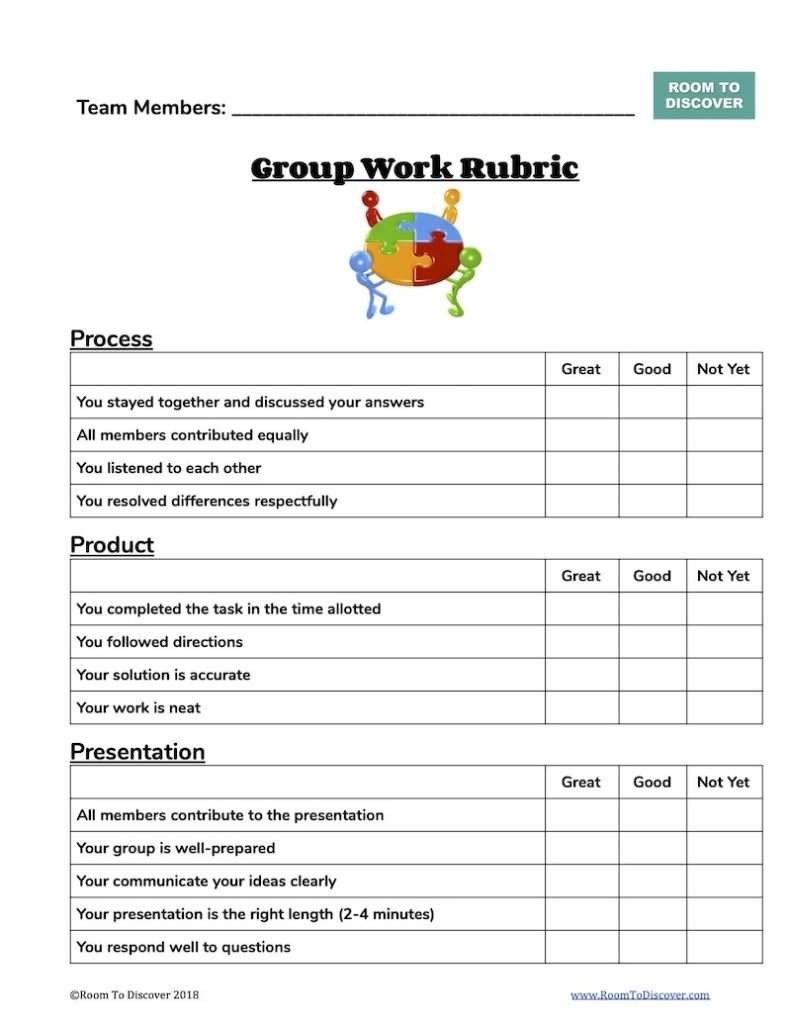
Addressing The Problem with Homework
Many educators are starting to recognize the problem with homework. And while homework is almost universal, there is little evidence that it actually works.

Are you looking for ways to bring project-based math to your classroom? Project-based learning offers a number of benefits for both teachers and students. But if you’re not used to teaching through inquiry, it can feel a bit daunting.
When I started with project-based math, I was mostly figuring it out as I went along. I had heard about PBL at conferences and in grad school. But I never found a step-by-step guide that showed me how it would work in a real classroom.
After leading a number of project-based math units, I designed the Fraction Operations Video Project. I feel like this project was where I finally hit my project-based stride. I had my materials organized from the beginning. And I was prepared for all the challenges that would arise from collaborative inquiry.
By the end of the project, the outcomes exceeded my expectations. My students were highly engaged and enthusiastic throughout the project. And by the end, they understood fraction operations in a way students hadn’t in prior years.
I hope by sharing the steps I took in planning and facilitating the unit will be helpful for other educators exploring project-based math.
This was a project completed by my 5th grade math students during the spring semester.
The overall goal was for them to learn basic fraction operations through inquiry. But I also wanted them to develop their organizational, planning, and social-emotional skills.
Building on what they already knew about fractions and about whole number operations, they were to master two fraction operations concepts:
The project required both an artifact (something they could hand in) as well as a presentation. I suggested several options, including a poster or Google Slides presentation.
There was also the option to create a video which served both purposes. A few groups initially chose posters or Slides, but ultimately every group decided to create videos. The animations were done on iPads using Explain Everything, and edited with iMovie.
By the end of the project, my students had developed a deeper understanding of fraction operations than they would have with a more traditional unit. They also really enjoyed the creation aspect.
Several students also learned quite a bit about video editing. In a few cases, they did spend a lot of time on animations and soundtracks. But even then, they were still able to demonstrate their understanding of the math content.
A project-based math unit will go much more smoothly if both students and teachers have prior experience with inquiry-based learning (IBL).
When I introduced this unit, I had already incorporated problem-based learning into my math classes. With problem-based learning, the teacher gives students a task or a problem to solve, and the activity is usually finished within a class period. Because it is more structured and covers a shorter time period, problem-based learning can serve as a helpful transition to project-based learning.
Project-Based Learning is more open-ended, and a single project usually lasts from a week to a month. While the teacher sets the guidelines and expectations, students have more choice about how to demonstrate mastery.
By the time I began this project, I had been incorporating weekly problem-based lessons into my math classes. This made it easier to anticipate where students would run into trouble, and to build-in supports that kept them on track. I also had a better sense of how long each phase of the project should take.
The problem-based lessons had also helped my students develop their IBL skill sets. They were used to approaching problems I hadn’t shown them how to solve. They had also learned the communication and collaboration skills to work effectively in small groups.
In addition to the social-emotional foundations, students also need conceptual foundations to be successful with project-based math. My students had already worked with visual models of fractions and whole number operations. Since they understood the concepts, they could use what they knew to teach themselves new concepts at the edge of their understanding. Students who only learn procedures are unable to make similar connections.
Once I was confident my students had the right foundations, the next step was to set them up for success.
I made sure not to show them how to do the math, as that would defeat the purpose of the inquiry. The first day consisted of walking students through the goals of the project, how the process would be structured, and the resources they would use.
I presented students with a written project description, explaining the focus of the project. They were to demonstrate with vi sual models how to divide a whole number by a whole number to create a fraction, and how to multiply a fraction by a whole number.
sual models how to divide a whole number by a whole number to create a fraction, and how to multiply a fraction by a whole number.
We also reviewed the rubric that would be used for the project. This broke the expectations into three areas: process, product, and presentation.
Process defines how they would work together and share responsibilities.
Product defines the criteria for the artifact they create. Since this project involved visual models, we reviewed my standards for an effective model: it had to show a starting value, operation, and end result. In other words, a visual model showing ⅓ was not the same as showing 1 ÷ 3 = ⅓. And the rule of thumb for any visual model is that someone else should be able to identify the expression or equation that the model represents.
The presentation section of the rubric details how they will present their work, explain it, and respond to questions.
I use the same group work rubric for most group activities, though I sometimes modify it to address the task’s content standards.
Since I was giving students a large, multi-stage task, I wanted to help them break the process into smaller pieces. This included structuring the group process and how they planned their work.
I created mixed groupings of 3-4 students. The goal was for each student to bring a unique strength to the task. I looked to balance traditional with creative thinkers. I also looked at non-academic skills, to ensure each group had a good communicator, someone who was organized, and someone with technology skills.
I gave them planning guides that broke the project into phases: two days for researching the standards, two days for creating their models, and two days for preparing their presentations.
The planning guides also listed jobs, such as captain, researcher, and designer. This helped students ensure that everyone had a job to do, and the work was shared somewhat evenly.
During that initial lesson, we also reviewed the resources students would use for the project. These included content resources, as well as creative tools.
Students would use content resources to teach themselves the math. They could use their textbooks, notes, and anything they could find via google search. Since we had been using Khan Academy for personalized learning, many opted to learn about visual models and fraction operations by watching Sal Khan’s videos.
At the time, I hadn’t yet created the Exploring Standards organizer. This Google Slides activity walks students through the process of breaking down a standard and how they can demonstrate mastery. After the project, I felt my students would have benefited from this resource, so I put it together for future use.
The creative tools, were the resources they would use to create their artifacts and presentations. Students had been issued iPads, which were loaded with apps for creating images, animations, and videos. Explain Everything is a great tool for making animated slideshows. Students can also turn the animated slides into videos, complete with voice over.
Most students created their animations in Explain Everything, and made final edits in iMovie. While I gave a quick demo on how to use these tools, learning them was part of the project. Some dove in and learned by trial and error. Others watched YouTube videos or read the help documents.
As you can see, planning a project-based math unit is a lot of work. But the good news is that once the project begins, the students are the ones responsible for their project’s success.
As long as I had set clear expectations and provided the right tools, I could step into a facilitative role.
While students worked in their teams, I was there mostly to answer questions. I would also circulate to help ensure they were communicating effectively and making progress toward our milestones. During this time, I completed the Process section of the group work rubric based on how I saw them working.
At the end of the day, I did have to extend the length of the project by a few days. But I didn’t mind, because I could see the students were engaged and working hard.
Eventually, I did limit the time they could spend on video editing. Some were focusing too much on special effects, and I didn’t want the math content to get lost in the bells and whistles.
But overall, my students shared work well. And they had little difficulty using resources to learn new content, which is the main objective of inquiry-based learning.
The whole project took about two weeks, including the introductory day, work days, and presentation days. And I’m happy to say that the outcomes of this project-based math unit exceeded my expectations.
Before the project, few students had a conceptual understanding of either standard. Some had gaps in the foundational skills required to understand fraction operations. But by the time we finished, almost every student was able to demonstrate proficiency in both standards.
They also developed social-emotional skills that helped them to work together and plan ahead. Not to mention the technical skills and presentation skills that will benefit them both in and out of the classroom.
Here are two examples of the student-created videos. You can view them all on the YouTube playlist.
I hope this description of our project-based math unit helps you to bring project-based learning to your classroom. Other than the steps mentioned above, the following tips will help to ensure your students enjoy the full benefits of project based math.
Before diving into a full-blown project-based learning unit, start with problem-based lessons. This will ensure you and your students have the skills and experience to be successful with project-based learning.
Students who are accustomed to being told how to do everything will need time to get comfortable with learning through inquiry. Smaller collaborative lessons will also help them develop the necessary communication skills.
Teachers who are accustomed to direct instruction will also benefit from starting small. Problem-based lessons will help you develop facilitation skills, and get better at predicting how long an inquiry will take.
You can find a whole library of problem-based math lessons in our online store. Including several specifically for visual models and for fractions.
Make sure students know what’s expected from the outset, both in terms of content mastery and in terms of group work process. Be very specific, to the point of saying “You have 15 minutes to come up with the equations you will use for your visual models.” This ensures students get started quickly, and makes it more likely they will stay on-task.
You should also let students know how they will be graded. I’ve coached teachers who didn’t believe in grading projects. Or they kept their grading criteria to themselves. In these cases, students were much more much less productive during group work time.
A group work rubric is a great way to organize and communicate your expectations. I craft my expectations so that students who make a good faith effort will do well. I want them to know that even if they make a mistake with the math, staying on task and working well as a team will be factored into their grades.
Giving a group of four students a task that will take several weeks can be a recipe for disaster. Many of our students can’t think ahead by fifteen minutes, let alone two weeks.
Part of the reason for projects is to help them get better at planning and organization. But we can’t do that by throwing them in the water and expecting them to swim.
Organizers and active facilitation help them divide up responsibilities and stay on track. Create a timeline with project milestones, and show them how to break the project into separate jobs for each student.
At the end of the day, experience is the best teacher. If you are new to inquiry-based learning, an online instructional coach can answer your questions and set you up for success. Visit our coaching page to learn more and schedule your free consultation, and find out how a virtual coach can build your confidence and save you time.
If you’d rather dive in on your own, you can still save time with the project-based learning resources in our online store.
I designed each resource to address the challenges I faced bringing project-based math to my classroom. The group work rubric helped my students understand what I meant by effective group work. And the Exploring Standards activity helped my students go straight to the content standards and understand the why behind the content.
If you found this post helpful, subscribe to our free Educator’s Newsletter. Each week we share student-centered learning strategies and success stories. It’s education inspiration, straight to your inbox!
 Jeff Lisciandrello is the founder of Room to Discover and an education consultant specializing in student-centered learning. His 3-Bridges Design for Learning helps schools explore innovative practices within traditional settings. He enjoys helping educators embrace inquiry-based and personalized approaches to instruction. You can connect with him via Twitter @EdTechJeff
Jeff Lisciandrello is the founder of Room to Discover and an education consultant specializing in student-centered learning. His 3-Bridges Design for Learning helps schools explore innovative practices within traditional settings. He enjoys helping educators embrace inquiry-based and personalized approaches to instruction. You can connect with him via Twitter @EdTechJeff

Many educators are starting to recognize the problem with homework. And while homework is almost universal, there is little evidence that it actually works.

Does the Danielson Rubric improve teaching? Maybe it’s an unfair question. After all, it’s a rubric, not a training program. But…

Teaching word problems takes more than key words. The Polya Process helps your students think strategically and make sense of story problems.